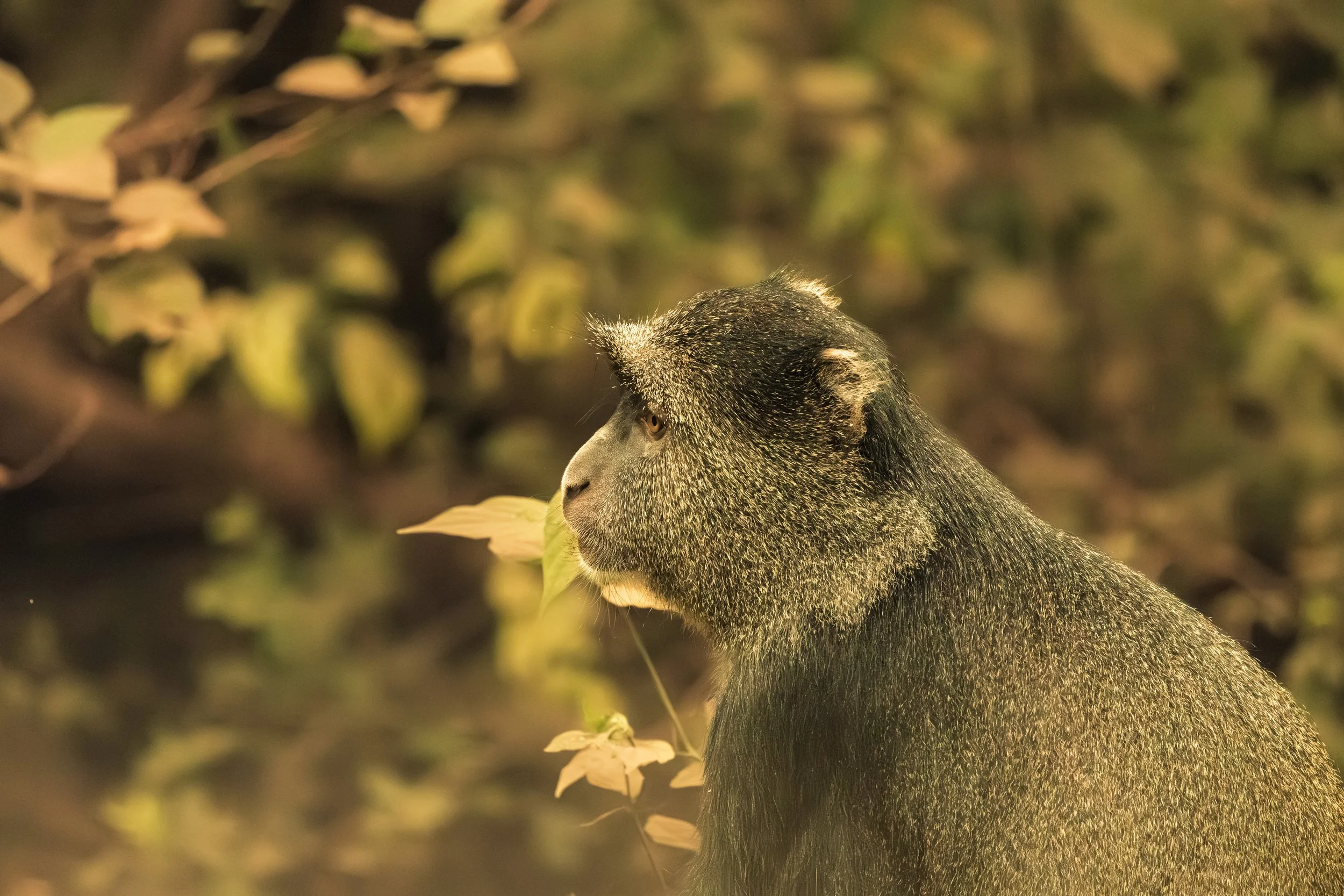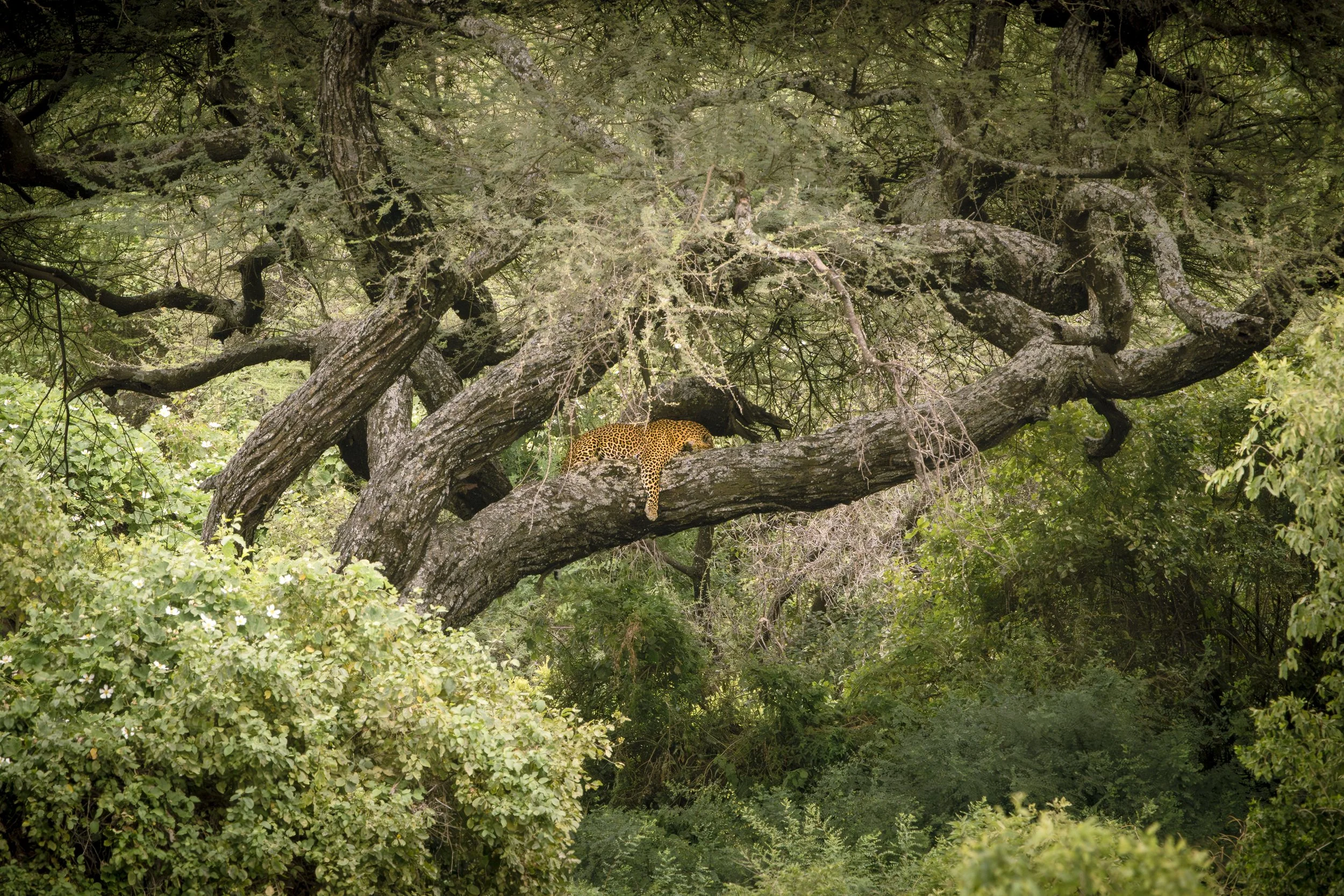Lake Manyara
A lakeside forest enclosed by the Manyara trees. The park feels intimate, but bursting with life.
"A lakeside forest surrounded by the Manyara trees. The park feels intimate, but bursting with life."
After a good night with lots of crickets as background noise, we sit down to breakfast and Jeroen tries to do some writing for the blog. Yesterday after dropping us off, Jabiri went to make something in the nearby town so it was too late to get back to the lodge. When he arrives back at the lodge we leave for Lake Manyara.
Lake Manyara National Park
Manyara is the name of trees that when close together form a kind of natural fence. Because the forest area around the lake is fenced with these trees, the area was named Lake Manyara. Jabiri indicated on Day 1 of our trip that we will continuously experience different landscapes and he is right. Lake Manyara National Park is somewhat like a large forest on an immense lake.
Jabiri describes it as a relatively small park; I identify with that a little less. The area is "only" 330 km2.
A macabre entry
We have not yet driven into the park for 2 minutes or we see a buffalo torn open. It is an impressive sight. Of course it is part of it, but personally I would have preferred to see a live buffalo. Jabiri indicates that the buffalo was probably attacked by a lion, so there is a good chance that a lion is nearby. And yes, a few meters away, among the trees, we see a male lion. He is hard to see, but rolls over on his back for a while.
We discuss a bit about whether a deceased buffalo counts for the big 5. I agree, we are not crossing him off the list yet. I do, however, even though he was hard to see, cross off the lion. Jabiri and Jeroen disagree and Jabiri assures us that in the next few days we will see lions that are more worthy of ticking off.
Monkey paradise
Tarangire is also called paradise for elephants, but today we are in paradise for monkeys. Even before we drive into the park I have spotted monkeys and even in the park it doesn't take long before we encounter several monkeys. Vervet monkeys, blue monkey or blue meerkat and baboons live here in abundance.
The baboons are also known as "the mob" because they like to "steal" food. In any case, they are plentiful in this park. We see baboons and vervet monkeys interchangeably playing in trees, eating and fleecing each other. Well, only their own kind. The fleas obviously keep them separate. The baboons like to move along the road. We see a group of up to 200 baboons with hatchlings on their backs or bellies moving along the road.
Check
We encounter all sorts of things in the forest. Wildhogs, we affectionately call them "Pumba," elephants, impalas and a waterbuck. We also run into Jabiri's father. He has been working as a tour guide for some 33 years and affectionately gives Jabiri a sweet. Not much later, Jabiri's father will also prove to be of great value. We drive with Jabiri toward the lake and see several birds, as well as a live buffalo. Check, now he can officially be off my big 5 list.
Jabiri explains that he is alone because he has been disowned by the group, possibly sick or no longer fast enough which would make him the weakest link in the group. A buffalo on his own also chooses offense a lot under the motto "offense is the best defense.
Leopard
We drive along the lake some more when Jabiri gets a call. It is his father, he has spotted a leopard. He explains to Jabiri approximately where it is and Jabiri starts to pick up speed. We drive through the park at a relatively fast pace, we see zebra, giraffe, impala, black birds with red heads, but it is all not interesting, we hope to be in time to see the leopard.
Not much later we arrive at Jabiri's father's car. By now there are already about 6 cars and yes, deeper into the forest is an impressive tree with a leopard resting on one of its branches. We take pictures, but I soon see that I have no chance of capturing the leopard with my phone. Hopefully Jeroen will succeed.
The "Ugly Five"
After the special sighting of the leopard, we go for lunch. Every day the lodges provide us with lunch boxes that are excellent. During lunch we spot some more birds and find out that besides the big and small five, there is also an ugly five. The ugly 5 consists of the warthog, vulture, marabou stork, hyena and wildebeest. Because we spotted the marabou stork at lunch, we are now on 4 of the 5. The big and small five remain a bit behind for now....
An almost-shower
After a late lunch, we slowly make our way toward the exit. We hope to perhaps see the lion a little closer as we head back out of the park. Along the way we encounter numerous giraffes, baboons, vervet monkeys, zebras and elephants. It is unimaginable how many impressive animals there are in this "forest.
The highlight of the afternoon is an elephant that we spot. Jabiri indicates that he thinks the elephant will drink at the water. And yes, the elephant walks quietly, with the occasional grass snack break in between, towards the water. There the male elephant begins to drink. We obviously hope he will shower himself as well, alas. He rinses his feet, rests his trunk a lot on his tusks, plays a bit with the water under his chin, but we don't get to see the shower.
Rhotia valley
We make our way toward the exit of the park, but unfortunately do not see the lion anymore. By now the buffalo is also almost undetectable because of the discoloration. I do not mind the latter.
Having forgotten something at the previous lodge, we stop halfway and ask someone with the tuktuk, but on a motorcycle, to pick it up for us. Meanwhile we go to the African Experience. Here you can see how all kinds of art is made and of course you can buy it.
Jeroen and I buy 2 paintings and meanwhile the package is also delivered. We leave for the lodge. The grounds of the lodge consist of 2 parts. On one side is the lodge area where we sleep. On the other side is an orphanage, for children from the neighborhood. 20% of the income goes to the orphanage.
We arrive at a beautiful "tent. Well, you can't really call it a tent, it's more like a house with tent cloths as sides. We have a view over a village and a beautiful green valley.
Not too late we have dinner, after which we soon fall asleep.
Tarangire, day 1
Our first encounter with elephants, giraffes, and the magic of the African landscape. This day was actually dedicated to moving but very quickly brought us an extensive preview.
"Our first encounter with elephants, giraffes, and the magic of the African landscape. This day was actually about moving but very quickly brought us a comprehensive preview."
Wednesday was largely devoted to the trip to Tarangire National Park. Jabiri indicated we could take it easy, so we left around 8:30. Evita had a restless night due to birds, loud trucks and the heat. I myself sleep surprisingly well - despite not normally being able to handle heat well. During the day it is hot, but so far it is not too bad.
After breakfast, we pack our things. We get lunch boxes from Chanya Lodge and leave for Tarangire via Arusha. There we make a short stop to withdraw money and meet Osman (co-owner of Gama Tours) and Jabiri's wife, who came to bring some forgotten clothes. Their little daughter was also along and found daddy's big car especially interesting. We get a bottle of wine as a gift and I get to borrow a beanbag - ideal for stabilizing my lens while shooting. During the lunch stop, we are joined by a Vervet monkey that sat at the top of the ridge of the building. Then we drive another 15 minutes or so to the park boundary.
First encounter with wildlife
At the entrance, Jabiri arranges the paperwork - as we are allowed to stay in the park for a maximum of 24 hours, so everything is carefully registered. Before we are even inside: elephants! A whole herd crosses the road right in front of our jeep. Intrusive looks, swaying trunks, including hatchlings. Magical.
Not much later we see giraffes, zebras and a male giraffe trying to woo a female. Without success - he then decides to get something to eat. Despite having to be at the lodge in time for an evening drive, Jabiri stops at every animal we encounter. And rightly so. It's beautiful. We also spot several birds, African fowl and the cute dik-diks: small antelopes that always live as a couple. They remain faithful to each other, true love!
Arrival at the lodge
Arriving at the Tarangire Safari Lodge, we check in. As of a certain time, we are not allowed to walk here alone - after all, there are all sorts of things walking around the area. A few days ago, a leopard walked past the tents in the evening. Our tent turns out to be a comfortable glamping with bed, bathroom and an insane view of the park. A fat-thick pair scurries around the tent. There is not much time to enjoy this: in half an hour we will be leaving again.
Our stay in Tarangire
Punctually at 7 p.m. we sit down to dinner. Until then, we are allowed to go to the restaurant on our own. I try an ice-cold Safari beer which is excellent. The buffet is fine - especially the papaya avocado salad. Since we have to move on quickly, someone from the staff offers to keep some fruit aside for dessert for when we get back.
Night Safari
At 7:30 p.m. we report to the jeep. There are six of us: a guide, a ranger, two Americans, Evita and me. They are wearing shirts from Banff, which immediately takes Evita back to her college days in Kelowna. I asked if they are Canadian, to which the man laughingly replied that lately they would prefer to pretend to be Canadian.
The guide explains the rules: talk softly, don't get up, flash is allowed. We drive into the dark. Soon we see a hare - nice, but not very special yet. This is followed by several birds and a chameleon. Then: a tail from a tree. At first Evita thought: leopard! But it turned out to be a genet. A little later we spot a hyena. It stays for a moment in the light of the flashlight, looks at us, and then calmly walks in front of the jeep. A worthy end to the day.
Back in camp
Back at camp, we chatted with the American couple. They were on an extensive safari and had already been to other countries in the region. After this they will be going to Botswana and South Africa. They told us that the camp where we are staying belongs to her cousin - some forty years ago her uncle built this otherwise beautiful residence.
We are escorted to our tent. That night we do hear some activity around the tent, probably the dik-diks that were also walking around earlier. The next day is the real game drive and we have the whole day to explore the park and spot animals. In that sense, today was "just" a warm-up.
But what one...
















